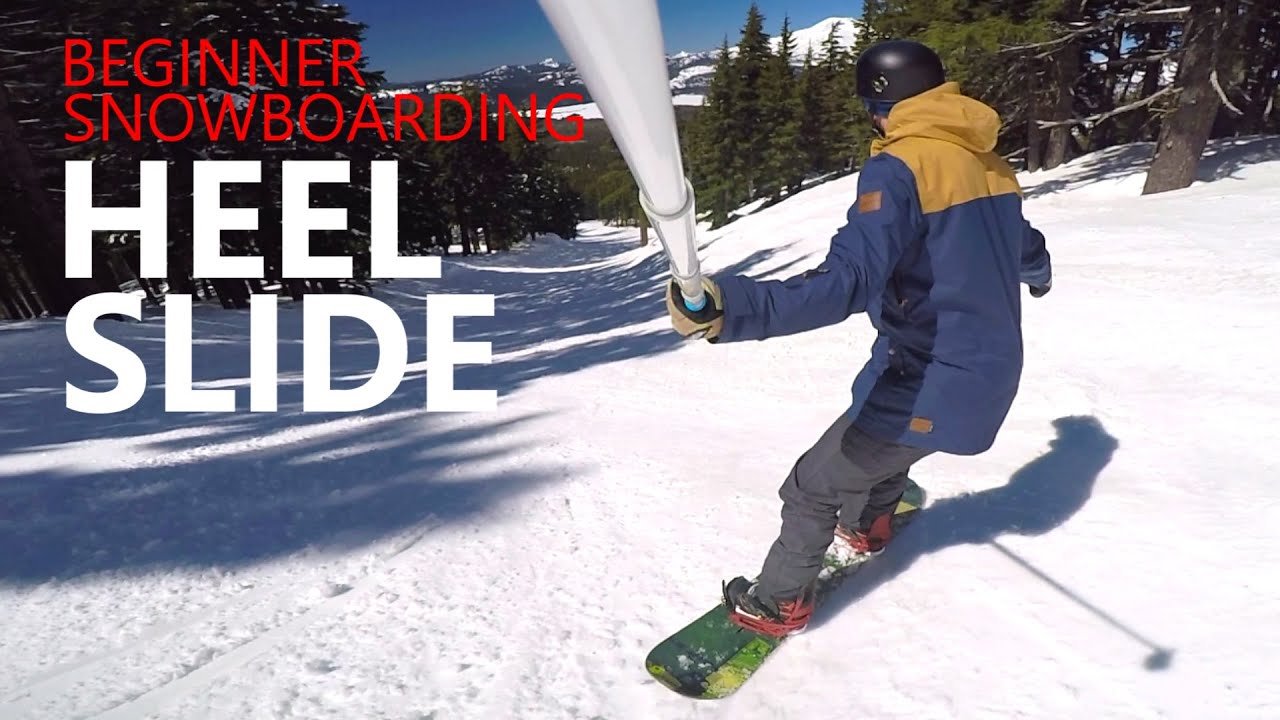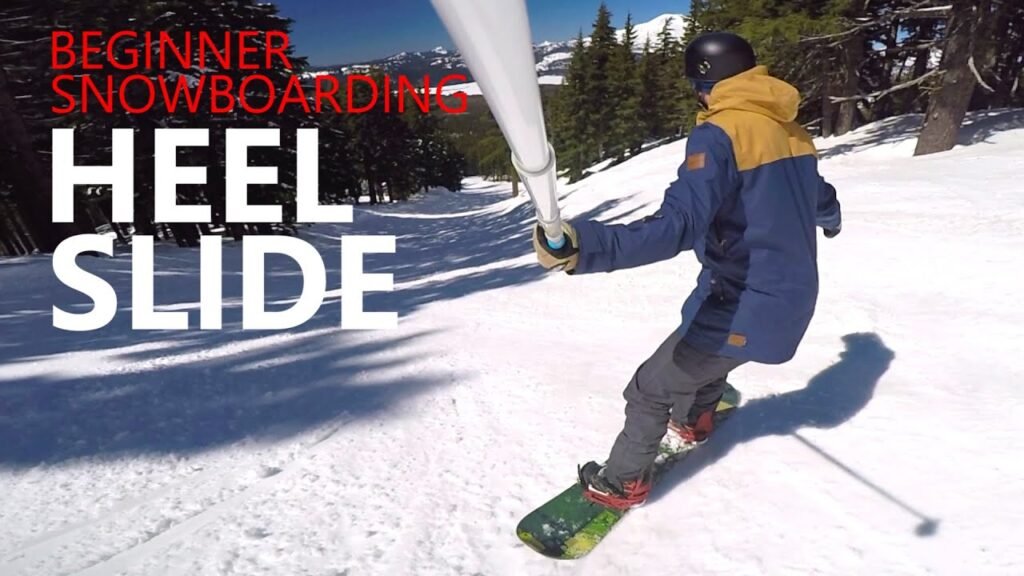
How to Heel Slide – Beginner Snowboarding Tutorial
In this beginner snowboarding tutorial by SnowboardProCamp, the focus is on learning the heel slide, which is one of the most crucial skills for beginners to master on their first day. The tutorial emphasizes the importance of heel sliding in teaching balance, speed control, and stopping. The video advises finding a gentle slope to practice on and encourages viewers to ask any questions they may have in the comment section. Additionally, the tutorial recommends exploring the beginner snowboarding playlist for more instructional videos. So, if you’re looking to get started with snowboarding, this tutorial is a great resource to help you learn the fundamentals and improve your skills.
Hey, it’s Kevin from Snowboardprocamp! In this beginner snowboard video, Kevin shares one of the most vital skills for beginners: the heel slide. He explains how heel sliding helps with balance, speed control, and stopping. Kevin starts by suggesting starting on a mellow slope, practicing sitting down facing the bottom, and feeling your board slide. He provides tips on lifting toes up to go slower and getting closer to the snow to gain speed. Kevin continues by demonstrating how to properly slide on your heels, emphasizing the feeling of sitting in a chair and keeping your back straight. He also explains how to shift weight to slide from side to side. Lastly, Kevin recommends spending plenty of time practicing to build confidence and control. So, watch the video, have fun on your snowboarding journey, and remember to learn at your own pace.
The Importance of Heel Sliding
Heel sliding is a fundamental skill in snowboarding that every beginner should learn. It not only helps with balance but also teaches how to control speed and stop effectively. By mastering the art of heel sliding, snowboarders can gain confidence on the slopes and progress in their snowboarding abilities. It is essential to start with heel sliding before moving on to more advanced techniques. In this article, we will explore the key aspects of heel sliding and how to practice and perfect this skill.
Finding the Right Slope
When learning to heel slide, it is crucial to find a mellow slope to practice on. A gentle incline will provide a safe environment for beginners to get comfortable with the technique. Look for a slope that is not too steep and has a smooth surface. This will make it easier to control speed and minimize the risk of accidents. It is important to choose a slope that matches your skill level and progress to more challenging terrain gradually.
Practicing Slider
To start practicing heel sliding, beginners can begin by sitting down facing the bottom of the slope with their board across the slope. This allows them to get a feel for the board sliding down the snow. By lifting the toes up, the board will slow down, while letting the board go flat and the toes closer to the snow will increase speed. This initial practice helps beginners understand the basic mechanics of heel sliding and how adjusting toe pressure affects speed.
After getting comfortable with sitting heel sliding, it’s time to stand up and practice sliding while standing. In this position, it is important to adopt the right body positioning.

Proper Body Positioning
To effectively execute a heel slide, proper body positioning is crucial. Imagine sitting in a chair while sliding down the slope on your heels. Stick your buttocks out slightly, maintain a fairly straight back, and position your hands over the top of the snowboard. Keep your knees bent and relaxed. This stance allows for better balance and control over the board. By bending the knees, the snowboarder can absorb any bumps or changes in the terrain, making the ride smoother and more stable.
Lifting Your Toes to Control Speed
One of the essential techniques in heel sliding is lifting the toes to control speed. By lifting the toes off the snow, friction is reduced, resulting in slower speeds. This is particularly useful when beginners want to gradually slow down or come to a complete stop. On the other hand, allowing the toes to get closer to the snow increases friction and speed. By finding a balance between toe pressure and speed, snowboarders can effectively control their descent and ride at a comfortable pace.
Sliding Back and Forth
Once the basics of heel sliding are mastered, it’s time to introduce the concept of sliding back and forth. This technique allows the snowboarder to change direction by shifting weight and pressure on the board. To slide to the right, lean slightly more on your right foot and point down the slope to the right. Similarly, to slide to the left, lean a bit more on your left foot and point down to the left. Practicing this movement repeatedly will help improve balance, coordination, and overall control over the board.
Leaning for Direction
While sliding back and forth helps change direction, the direction of the slide can also be controlled by leaning. When initiating a slide, leaning more on the foot corresponding to the desired direction will guide the board appropriately. For example, leaning more on the right foot will cause the board to turn right, while leaning more on the left foot will lead to a left turn. By mastering the art of leaning, snowboarders can navigate slopes with precision and confidence.
Stopping
Knowing how to stop effectively is crucial for any snowboarder. To stop while heel sliding, face the bottom of the slope and put equal weight on both feet. This distributes pressure evenly and allows for a controlled stop. It is important to maintain balance and keep the knees slightly bent while stopping. Practicing different stopping techniques will help snowboarders develop the skills needed to stop confidently in various situations.
Putting in Mileage
To improve any skill, practice is key. The same goes for heel sliding. Putting in mileage refers to practicing the skill repeatedly. The more a snowboarder practices heel sliding, the more comfortable they will become with their balance. This practice also allows them to better control their speed and the direction they want their board to go. While it may be tempting to focus solely on heel sliding, it is important to dedicate an equal amount of time to toe sliding as well. This balance between both techniques will ensure well-rounded skills on the slopes.
Conclusion
Heel sliding is a fundamental skill in snowboarding with numerous benefits. From improving balance to controlling speed and stopping effectively, mastering heel sliding is essential for beginners. By finding the right slope, practicing slider, adopting proper body positioning, lifting toes to control speed, sliding back and forth, leaning for direction, stopping confidently, and putting in mileage, snowboarders can become proficient in heel sliding. Remember to learn at your own pace and have fun while learning this essential skill.
